Financial Accounts of the United States - Z.1
Recent Developments RSS Data Download
The recent developments discussed below refer to data through March 31, 2023.
- Household net worth increased by $3.0 trillion in the first quarter, largely driven by gains on corporate equity.
- Household debt growth expanded at a 2.2% pace as growth in both mortgage debt and consumer credit slowed in the first quarter.
- Nonfinancial business debt increased at an annual rate of 3.8%, reflecting a pickup in net bond issuance but weak growth in mortgages and other nonmortgage loans.
Household Net Worth
The net worth of households and nonprofit organizations increased $3.0 trillion to $148.8 trillion in the first quarter. The value of stocks on the household balance sheet increased by $2.4 trillion, while the value of real estate decreased by $0.6 trillion.
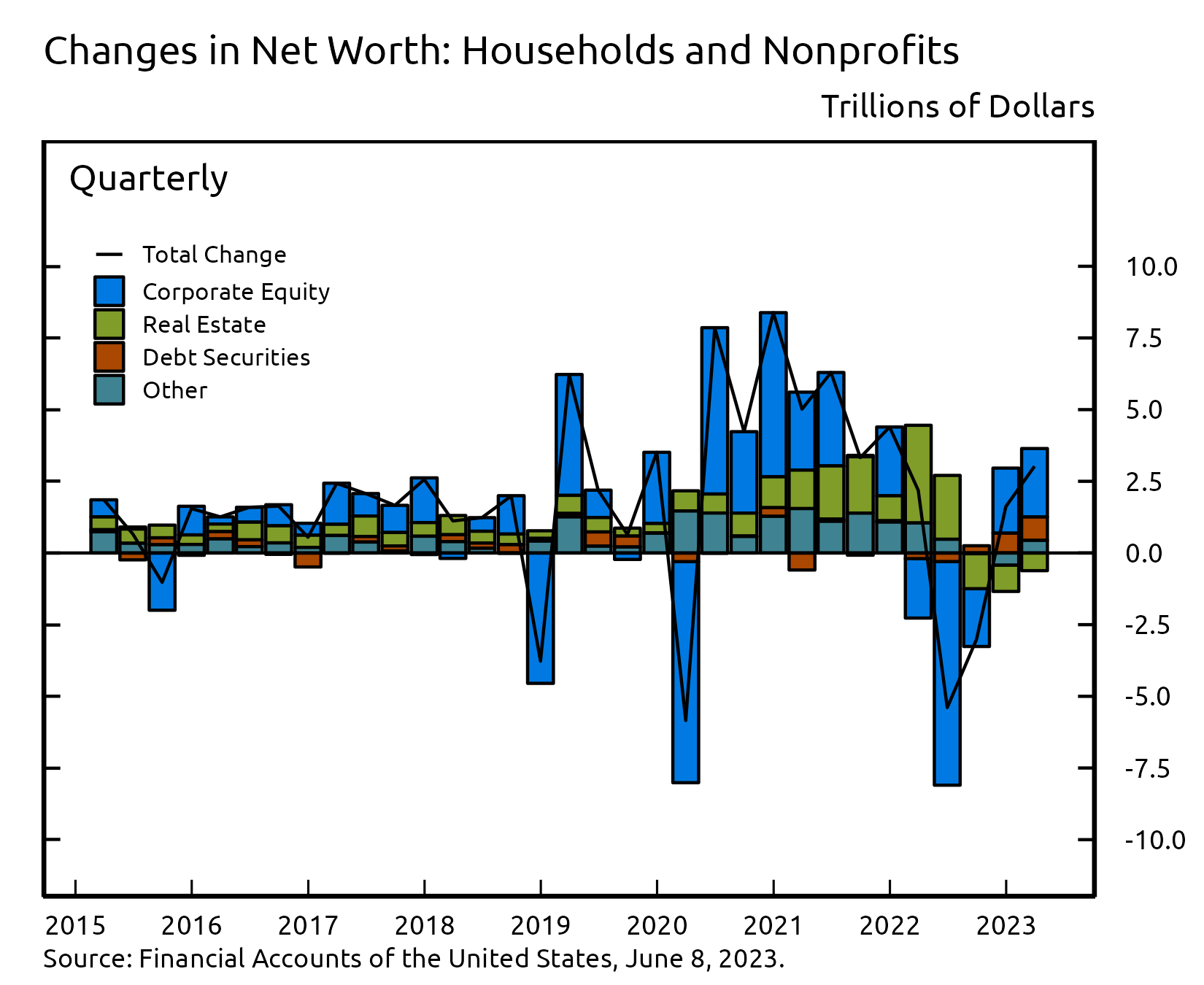
View interactive | Accessible version | CSV | Data Dictionary | Chart Note (1) |
Directly and indirectly held corporate equities ($42.1 trillion) and household real estate ($41.2 trillion) were among the largest components of household net worth. Household debt (seasonally adjusted) was $19.2 trillion.
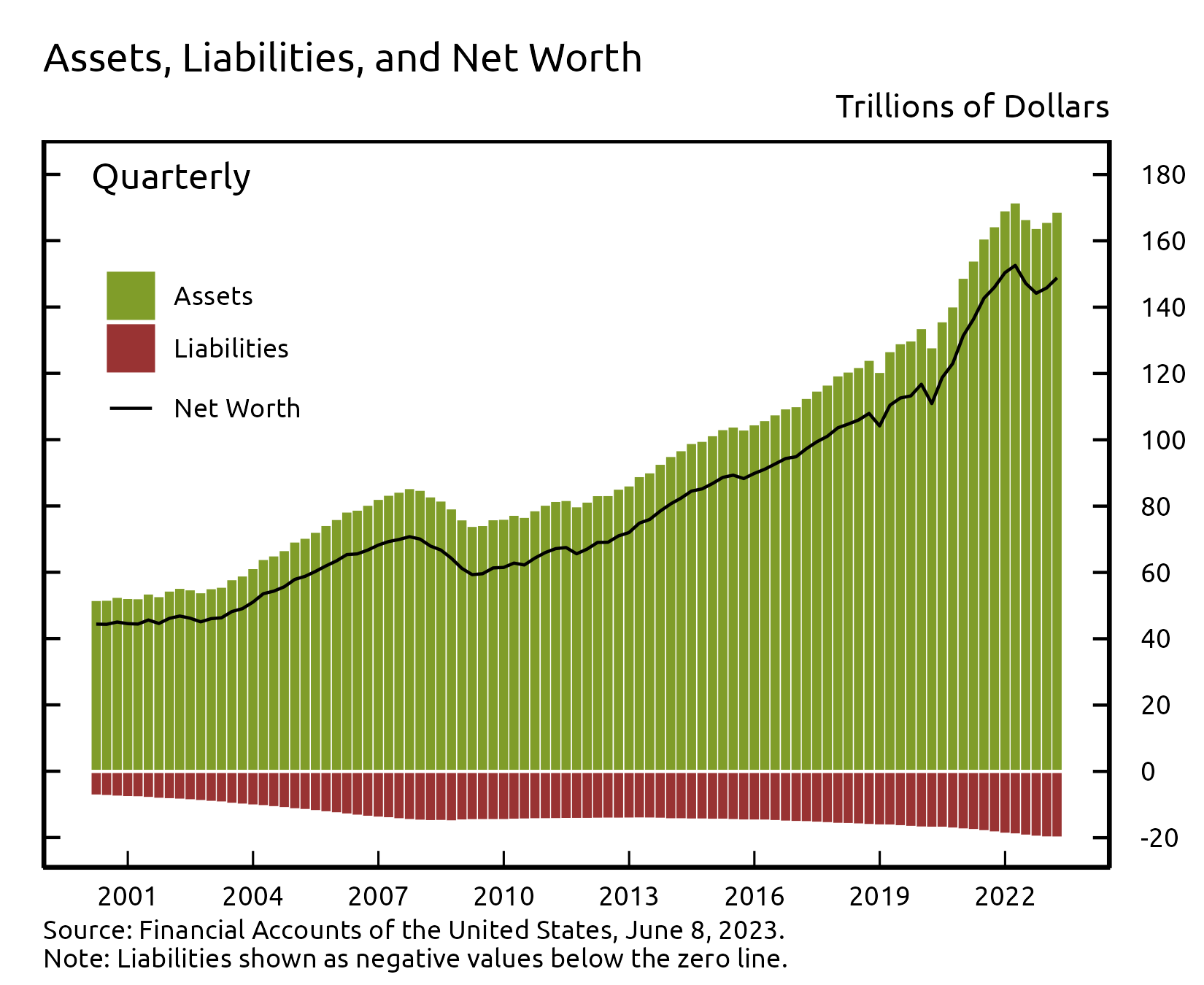
View interactive | Accessible version | CSV | Data Dictionary |
Household Balance Sheet Summary
| Description | 2021 | 2022 | 2022:Q2 | 2022:Q3 | 2022:Q4 | 2023:Q1 |
|---|---|---|---|---|---|---|
| Net Worth | 150.41 | 145.81 | 147.20 | 144.19 | 145.81 | 148.84 |
| Change in Net Worth | 19.03 | -4.60 | -5.39 | -3.01 | 1.62 | 3.03 |
| Equities | 49.34 | 39.71 | 39.46 | 37.44 | 39.71 | 42.10 |
| Change in Equities | 8.43 | -9.62 | -7.80 | -2.02 | 2.27 | 2.39 |
| Real Estate | 38.30 | 41.79 | 43.95 | 42.67 | 41.79 | 41.18 |
| Change in Real Estate | 5.39 | 3.49 | 2.20 | -1.28 | -0.88 | -0.61 |
For more data on household net worth, see table B.101
Nonfinancial debt
Household debt grew by 2.2% in the first quarter of 2023 (this and subsequent rates of growth are reported at a seasonally adjusted annual rate), reflecting a slowdown in the growth of both home mortgage debt and consumer credit. Home mortgage debt expanded by 2.5% while nonmortgage consumer credit increased by 4.3%.
Nonfinancial business debt grew at a 3.8% pace, reflecting strong net issuance of corporate debt securities and weaker growth in mortgages and other loans. Federal debt increased at a 4.5% pace, while state and local debt expanded by 1.2%.
The ratio of nonfinancial debt to GDP edged down in the first quarter. The ratio has declined substantially since it spiked amid pandemic-related factors in the second quarter of 2020, but remains slightly above the level that prevailed in the years just before the pandemic.
For more data on nonfinancial debt, see table D.1 (rates of growth) and table D.3 (outstanding).
Debt Growth by Sector
| Description | 2021 | 2022 | 2022:Q2 | 2022:Q3 | 2022:Q4 | 2023:Q1 |
|---|---|---|---|---|---|---|
| Total Nonfinancial | 6.35 | 5.72 | 6.26 | 4.57 | 3.19 | 3.50 |
| Households and Nonprofits | 7.62 | 6.42 | 7.16 | 6.43 | 3.33 | 2.20 |
| Nonfinancial Business | 4.88 | 5.81 | 7.16 | 4.18 | 3.39 | 3.82 |
| Federal Government | 7.13 | 6.11 | 5.56 | 4.19 | 3.98 | 4.45 |
| State and Local Governments | 2.14 | -1.63 | 1.57 | -0.56 | -5.15 | 1.23 |
Debt Outstanding by Sector
| Description | 2021 | 2022 | 2022:Q2 | 2022:Q3 | 2022:Q4 | 2023:Q1 |
|---|---|---|---|---|---|---|
| Total Nonfinancial | 65.15 | 68.91 | 67.57 | 68.34 | 68.91 | 69.51 |
| Households and Nonprofits | 17.97 | 19.05 | 18.58 | 18.88 | 19.05 | 19.16 |
| Nonfinancial Business | 18.60 | 19.78 | 19.41 | 19.62 | 19.78 | 19.97 |
| Federal Government | 25.30 | 26.85 | 26.31 | 26.59 | 26.85 | 27.15 |
| State and Local Governments | 3.27 | 3.22 | 3.27 | 3.26 | 3.22 | 3.23 |
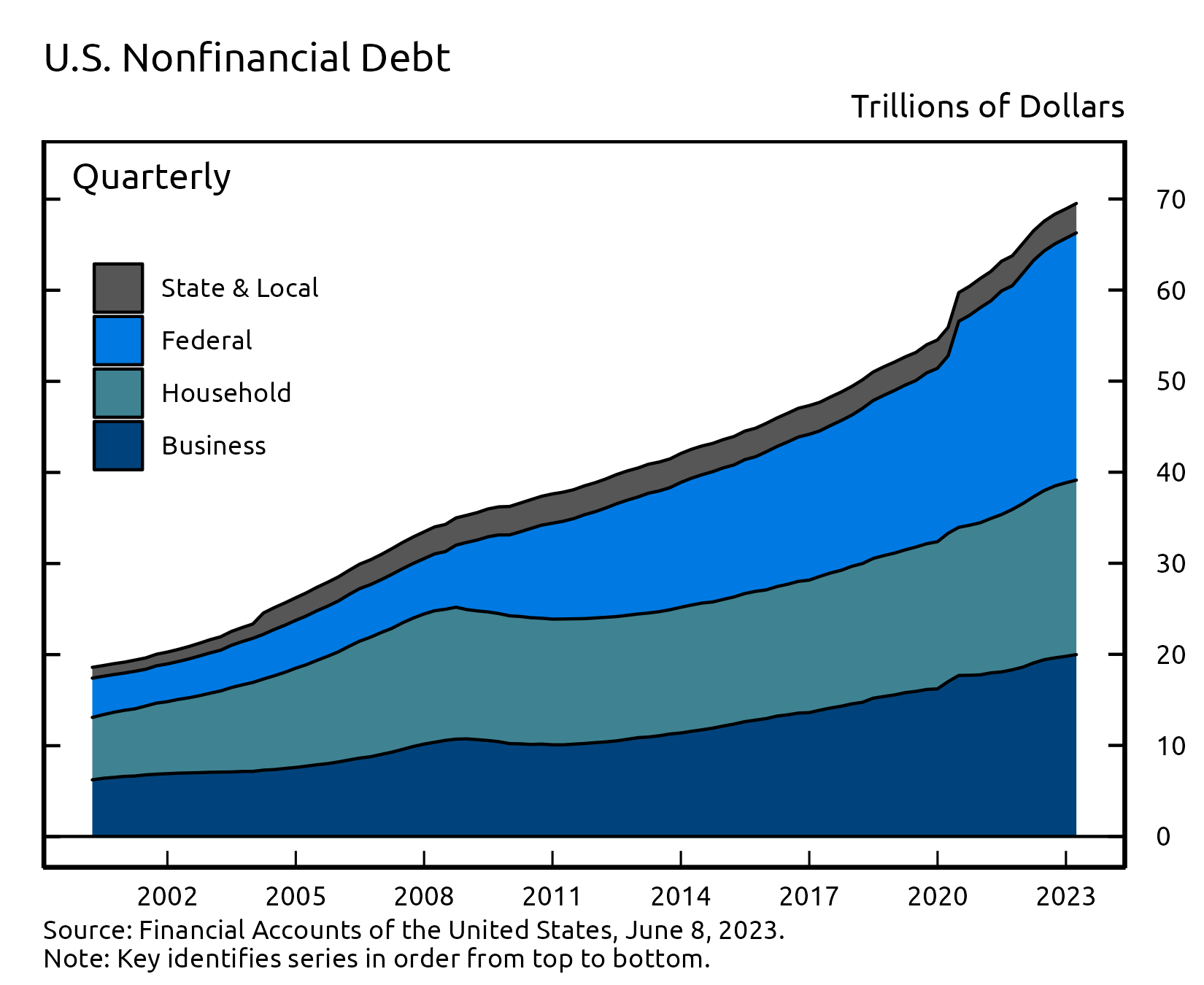
Accessible version | CSV | Data Dictionary |
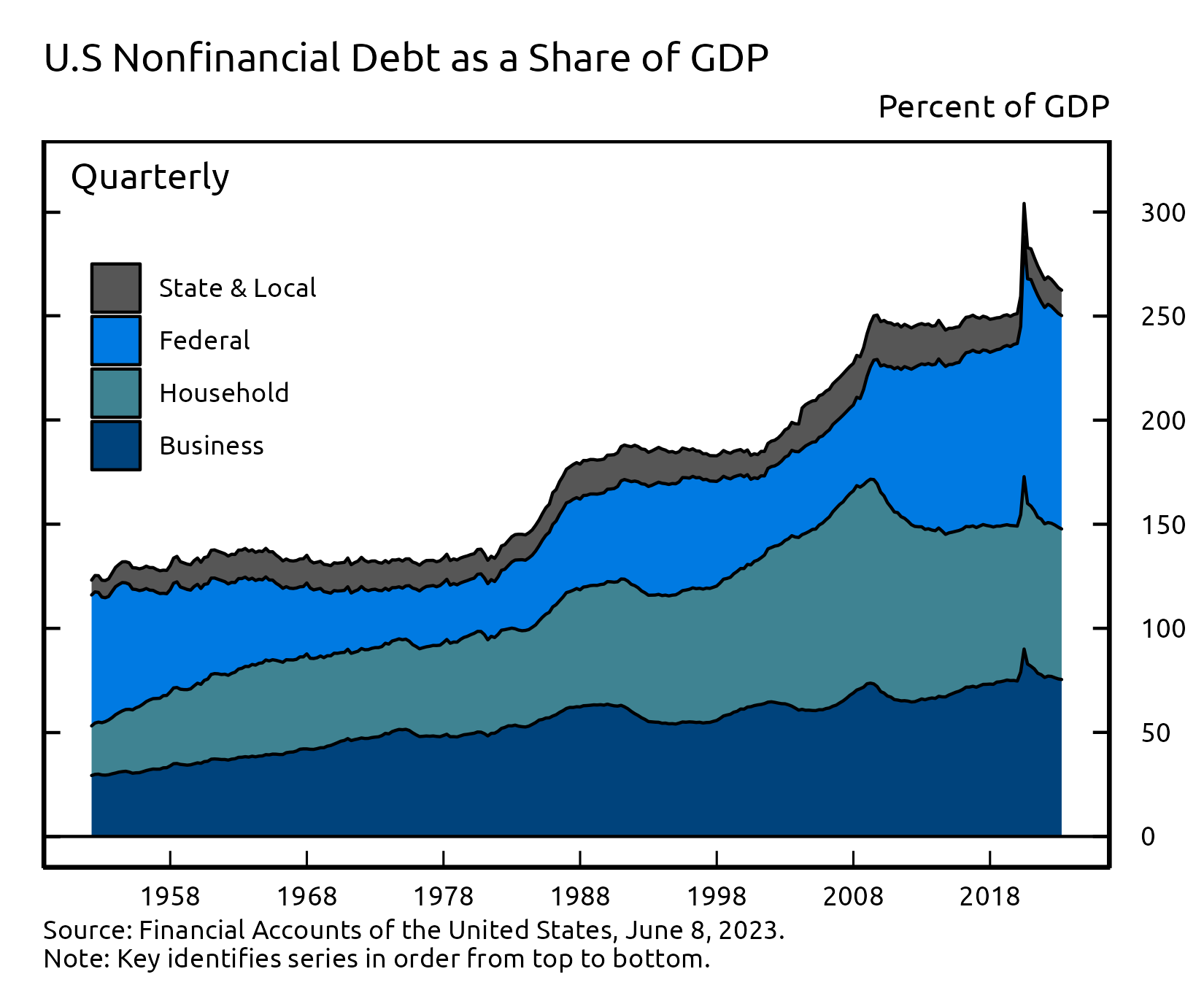
Accessible version | CSV | Data Dictionary |
Looking at the various components of nonfinancial business debt, corporate bonds increased by about $145 billion in the first quarter while total loans increased by $63 billion, with mortgage loans accounting for much of the uptick. Nonmortgage loans at depository institutions increased by $24 billion in the first quarter, markedly weaker than in recent quarters, while other loans from nonbanks decreased slightly.
Overall, outstanding nonfinancial corporate debt was $12.7 trillion. Corporate bonds, at roughly $6.9 trillion, accounted for 54% of the total. Nonmortgage depository loans were about $1.5 trillion. Other types of debt include loans from nonbank institutions, loans from the federal government, and commercial paper.
The nonfinancial noncorporate business sector consists mostly of smaller businesses, which are typically not incorporated. Nonfinancial noncorporate business debt was $7.2 trillion in the first quarter. Mortgage loans, at roughly $5.2 trillion, accounted for about 72% of the total, while nonmortgage depository loans ($1.6 trillion) accounted for most of the remainder.
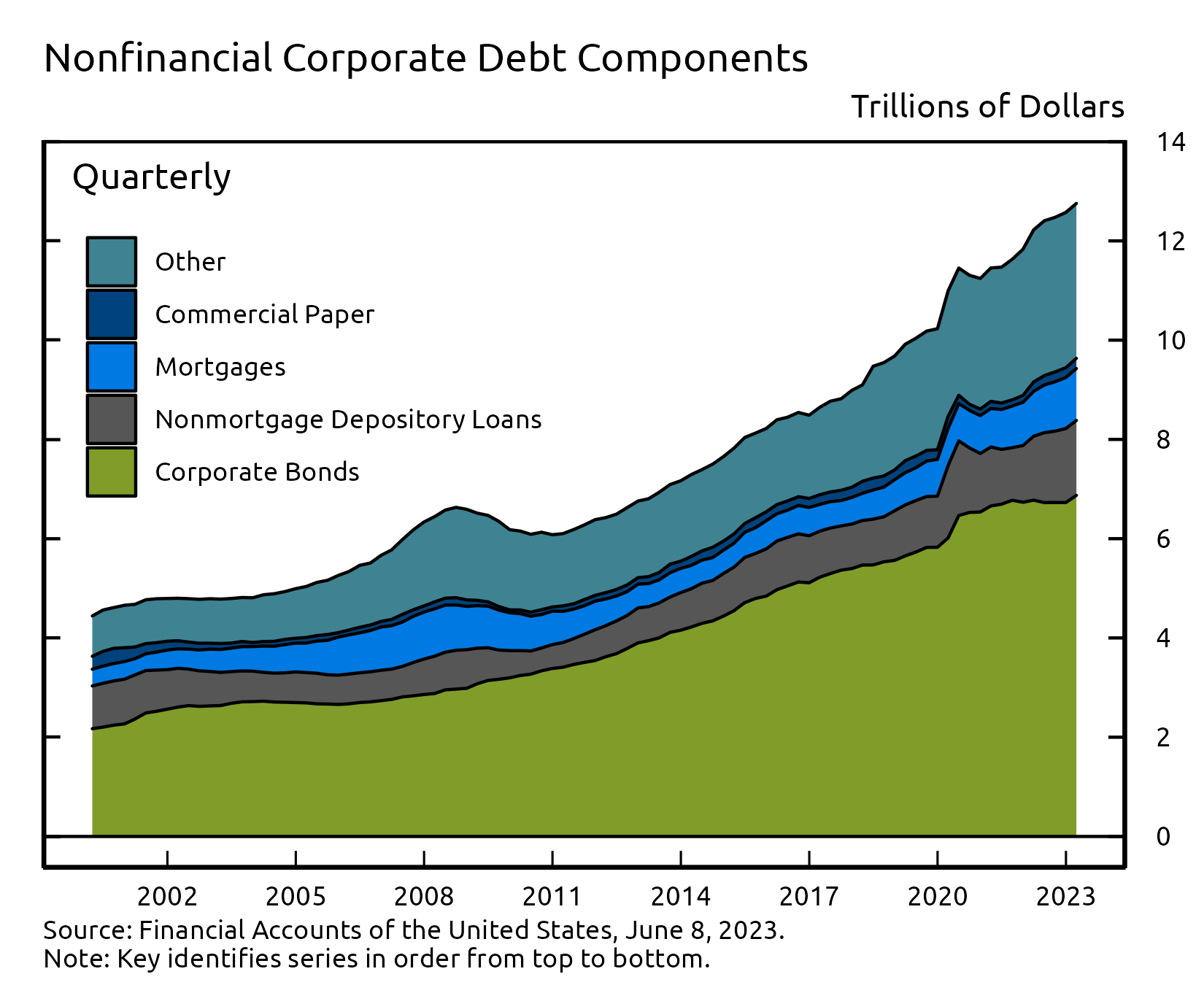
Accessible version | CSV | Data Dictionary |
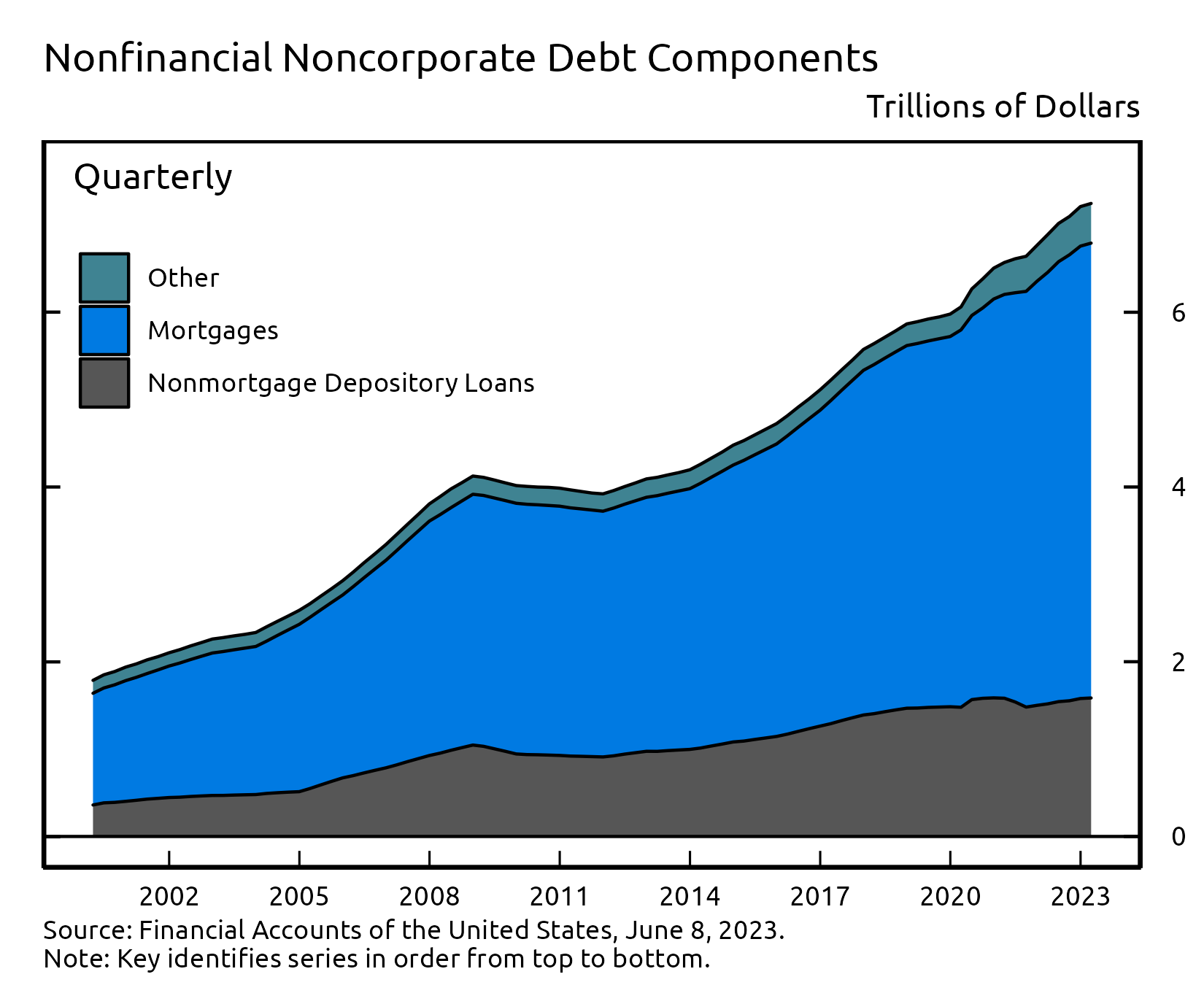
Accessible version | CSV | Data Dictionary |
For more data on nonfinancial business balance sheets, including debt, see tables B.103 and B.104.
Coming soon
- Enhanced Financial Accounts Projects
(www.federalreserve.gov/releases/efa/enhanced-financial-accounts.htm)
will be updated on Friday, June 16, 2023, including the
Distributional Financial Accounts, which provide a quarterly
estimate of the distribution of U.S. household wealth.
- Financial Accounts data for the second quarter of 2023 will be published on Friday, September 8, 2023, at 12:00 noon.
Chart Notes
- Changes in net worth consist of transactions, revaluations, and other volume changes. Corporate equity and debt securities include directly and indirectly held securities. Real estate is the value of owner-occupied real estate. Other includes equity in noncorporate businesses, consumer durable goods, fixed assets of nonprofit organizations, and all other financial assets apart from corporate equities and debt securities, net of liabilities, as shown on table B.101 Balance Sheet of Households and Nonprofit Organizations.